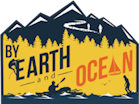Noosa Main Beach – Nature’s Canvas, Cultural Hub & Surfing Legacy
Natural & Geological Context
- Ancient Coastal Connection: From Noosa Main Beach, you can gaze north to the Teewah and Cooloola Sand Dunes, part of a dune field that reaches over 200 meters high. These dunes—one of the world’s largest vegetated systems—were formed over millennia by wind and ocean currents moving sand north from New South Wales and southern Queensland.(parks.desi.qld.gov.au, noosamatters.com.au)
- Coloured Sands Lore: The dunes display a dazzling array of up to 72 colours, created by iron oxides and leached plant compounds. Aboriginal legend tells of a rainbow-spirit that brought this spectrum to the cliffs, weaving culture into the landscape.(Wikipedia, kinaba.org)
World Surf Reserve & Coastal Conditions
- Surfing Heritage Recognised: In 2020, Noosa’s point breaks—from Laguna Bay to North Sunshine Beach, including Main Beach—were designated a World Surfing Reserve, becoming the 10th globally and the 3rd in Australia. This honours outstanding waves, environmental stewardship, and community surfing culture.(Noosa Today, swellnet.com, Noosa.com)
- Sheltered Orientation: Noosa Main Beach faces north, making it sheltered from prevailing southeast winds. This orientation creates calm, year-round waters ideal for swimming and beginner surfers.(Noosa.com)
- Home of the Noosa Festival of Surfing: This iconic, family-friendly festival brings surfers from around the world to celebrate the art of wave riding right here on Main Beach.
Rich Marine Life
- Ocean Residents: Along with vibrant fish schools, dolphins and turtles are frequent visitors to the coastal waters. On rare occasions, dugongs may be spotted grazing on seagrass beds.
- Whale Watching: From June to November, migrating humpback whales pass dangerously close offshore, making Noosa a prime vantage point.
- Loggerhead Turtles: Noosa’s sandy beaches become nesting grounds for loggerhead turtles from November to February, with hatchlings making dramatic nighttime journeys to the sea.
- Shark Presence: Coastal waters do have bull sharks, known for their tolerance of freshwater. Historical incidents—the only two in the region—occurred in the 1960s (one fatal) and 2013 (non-fatal). A large great white shark was observed circling a fishing boat recently, likely out of curiosity. Since these attacks, shark nets have been installed at Main Beach and nearby Sunshine Beach for safety. The Noosa Biosphere Reserve Foundation advocates for modern alternatives like SMART drumlines, drones, and personal protection devices to balance safety with ecological sensitivity.
Noosa Triathlon – Swim Leg at the Heart of the Event
- Origins & Evolution: The iconic Noosa Triathlon began in 1983 as a well-intentioned run, but evolved into a triathlon due to logistical challenges. It started modestly—180 athletes, no wetsuits allowed, optional helmets—and quickly became Australia’s premier triathlon event.
- Main Beach Swim: The swim leg takes place right here at Main Beach, with the transition area just behind, making this stretch instantly recognizable to competitors and spectators alike.
- Global Sporting Festival: Today, Noosa Tri is the largest Olympic-distance triathlon in the world, drawing over 13,000 athletes and 30,000 spectators to a festive five-day event that marries sport, community, and place.
Why Noosa Main Beach Matters
Noosa Main Beach isn’t just a stretch of sand—it’s a living junction of geologic wonder, coastal conservation, surf culture, and community spirit. From luminous dunes to world-class waves, from marine life to triathlon tradition, this beach reflects the layered identity of Noosa as a place where nature inspires and culture thrives.
